Cereals 2009: Grain drying and storage advice
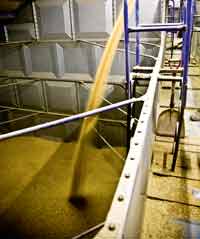
Memories of the 2008 harvest, with bogged-down combines, tractors and trailers struggling to leave muddy fields, piles of grain awaiting drying and steam emerging from storage sheds, are all too vivid for many farmers.
Plenty of firms in the Post Harvest Technology area at Cereals 2009 are preparing to exhibit their answers to some of the drying and storage problems highlighted last season.
“It’s never too late to think about getting the best equipment for safe and cost-effective grain storage,” says Gavin Lishman.
His company supplies drying pedestals and fans, plus a wide range of supporting grain quality control equipment, such as automatic fan controllers, temperature monitoring and building ventilation systems.
“Pile-Dry Pedestals proved their worth in last year’s wet year, storing grain at crazy moistures and, in many cases, being used to dry down to more manageable levels,” he says. “The Martin Lishman humidity and temperature fan controllers were a key element in this.
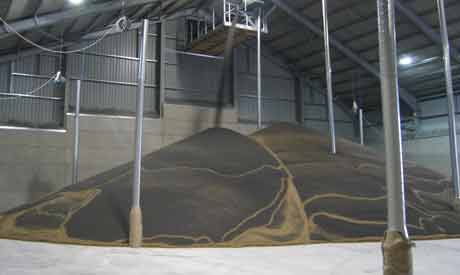
“The law of averages, and the Met Office prediction, says it’s going to be a hot summer, so cooling grain to ensure the highest quality and avoid deterioration, will be as essential as ever.”
The firm’s temperature differential fan controller has been shown to save up to 40% energy costs while ensuring that grain is cooled as quickly as possible, he explains.
“But for that last minute emergency cooling need, the old faithful Trouble-Dry hot spot spear is an essential standby tool.”
The costs of grain cooling with Pile-Dry Pedastals starts from as little as £2/t for the equipment, and low running costs can be achieved by fitting a temperature differential automatic fan controller for under £200 plus suitable fan starters, says Dr Lishman.
- Contact Martin Lishman
Good simple crop storage equipment, although not glamorous or sexy, is an essential part of the arable farmer’s armoury, says the firm’s Charles Goldingham.
“After last harvest’s dreadful weather, farmers purchasing priorities now include accurate moisture meters, for example the Unimeter, and improved and robust PolyCool Pedestal Crop Cooling systems.
“Last autumn supplies ran out in the race to preserve grain in such hostile conditions. We’re expecting record demand again at the Cereals event this year.”
Increasing numbers of farmers follow HGCA cooling advice by controlling pedestal fans using a differential temperature controller, like to CropCool, says Mr Goldingham. The HGCA work demonstrates grain is cooled quicker and the electricity savings can be up to 40%.
“At Cereals 2008, a farmer marched up to me (when I was in full-flow) and announced he had saved the cost of his new CropCool in one season in reduced electricity bills. I should have arrested his exit from my stand and told him to take over my job!”
- Contact Goldingham Contracts
Following the dire weather during 2008, it is understandable that growers could be nervous about future weather patterns, says Stewart McArthur.
“We believe that farmers should continue to give careful attention to how grain drying operations are managed in the future.”
However, it would be wrong to consider drying management purely in terms of last year’s difficulties, he stresses.
“Farmers should stay focused on commercial benefit which may be derived from investing in drying facilities. Salesmen suggesting investment on any other basis should be pointed towards the gate.
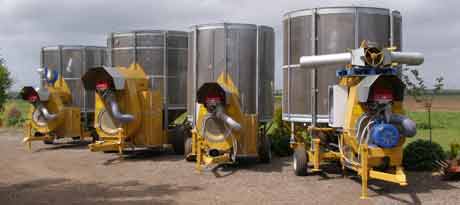
“We see the effect of last year’s difficulties tipping the balance towards drier purchase or upgrading, where such investment was already under consideration.
“We don’t expect to see farmers panic buying. At Mecmar our watchwords are “clear thinking – straight talking” – and that is how we will continue to address prospective customers.”
The Mecmar range of driers offers a particularly flexible range of options to farmers in terms of capacity, fuel, drive systems and levels of automation with prices ranging from £26,000, says Mr McArthur.
“Probably the biggest single advantage of the Mecmar is its high resale value and its ease of movement to another farm, providing the farmer with inbuilt financial and management flexibility.”
- Contact Mecmar
After a very difficult 2008 harvest with large quantities of wet grain, some farmers have invested in new driers and handling equipment and are well placed to deal with a repeat of last harvest’s conditions, acknowledges Malcolm Greves.
“However, for many, the falling grain prices post harvest 2008 resulted in the postponement of investment this year and they will be looking for ways to improve their existing facilities within the financial and time constraints that apply.
“Kongskilde can offer both pneumatic and mechanical solutions within a short time frame that might just ease harvest pressure.
“Another factor very evident at present is the large quantity of unsold grain from the 2008 harvest,” he says. Some of this is likely to be carried over into the autumn, increasing pressure on available storage during and immediately after harvest.”
So it’s likely that older buildings will be pressed into service and for some farmers a suction blower allowing grain to be moved in and out of these temporary stores could be a useful investment, Mr Greves suggests.
“For a modest investment of about £16,000, a suction blower of 60t/hour could be in place in a very short time to deal with this situation.”
- Contact Kongskilde
Dan-Corn – Allfarm Installations
With harvest fast approaching Dan-Corn is well prepared for the time of year when customers need quick delivery, says the firm’s Jens Erik Iversen.
“We always have complete drying/aeration silos in stock, together with conveying systems and the even more economical Westfield auger range, to bring the grain quickly and easily to your existing grain store or silo.”
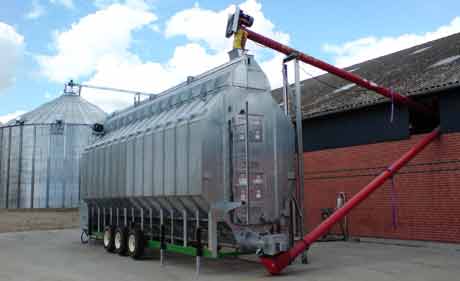
Also available from stock, is the DC range of batch and continuous driers.
The company claims to have storage solutions, from the most simple to the large complex plant, which can make all the difference to grain growers investing in new plant.
“In England we have Allfarm Installations that will help you find the right system that is most suitable before this season.”
- Contact Allfarm Installations
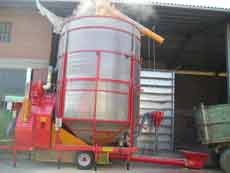 |
|---|
Master Driers were introduced into the UK in 1983 their 25th anniversary was celebrated during one of the most difficult harvest conditions, notes the firm’s Garry Ingram.
Long, wet spells made it necessary to combine in difficult conditions at very high grain moistures and nearly all cereals had to be dried.
“The drying of high moisture crops creates many problems,” he says. “It’s impossible to dry on the floor and it considerably reduces the possible throughput of continuous flow driers.”
In such difficult conditions, a mobile batch drier is most suitable as it offers continued re-circulation with the possibility to mix grain of various moisture contents. That ensures good flow and circulation making the drying process easier, he explains.
“In our review of last year’s harvest, we found that a lot of the older small machines were pulled out of store and pushed into operation. The larger capacity 40t batch machines worked extremely well due to the increased diameter of the re-circulating auger.
“It was a testing time for all harvest machinery, and last year proved that a Master Drier is a good insurance especially in difficult harvest conditions.”
- Contact Master Farms Services
Check your equipment now – well before harvest, urges the firm’s Jan Field.
“Take the covers off and check the condition of belts, buckets, chains, drives and bearings. If they’re worn, seized, torn or bent then replace them while there’s still time, so that whatever the weather throws at us, you will be able to keep running and avoid costly hold-ups.”
The company supplies spares for a wide range of conveyors and elevators at very competitive prices for both Guttridge and Carier machines, says Mrs Field.
- Contact Guttridge

